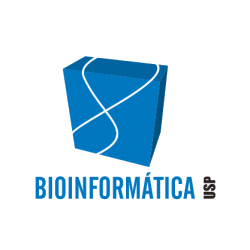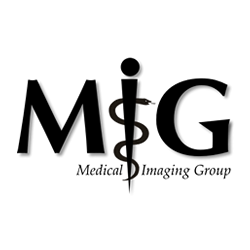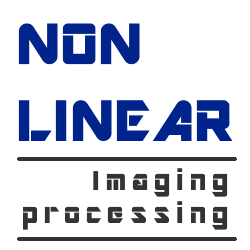This email address is being protected from spambots. You need JavaScript enabled to view it.
+55 11 30916135
Main Research Lines
- Hits: 4056
What we do...
The Vision Group at IME – USP is composed by eight professors working on theoretical and applied research topics in computer vision, image processing, structural and statistical pattern recognition and bioinformatics. Currently, the group is responsible for the supervision of more than 60 graduate students, postdoctoral researchers and undergraduates.
 BIOINFO - USP
BIOINFO - USP
Recently established as a consequence of the successful Brazilian initiatives in genomic and post-genomic studies, the MSc and PhD Programs on Bioinformatics at USP aim to meet the resultant need for a grad program that can simultaneously deal with biological and computational aspects of this field. The Program aims the training of highly-qualified human resources who can work in research and also in development and innovation. The Program is composed by many of the main USP's institutes that host researches in biology and informatics, comprising studies on genome, transcriptome, proteome, metabolome, structural biology, systems biology, among other.
 MORE ABOUT IT
MORE ABOUT IT
+55 (11) 3091-9980
This email address is being protected from spambots. You need JavaScript enabled to view it.
Rua do Matão, 1010
IME-USP, Bloco B, sala 137
CEP 05508-050
São Paulo - SP
 MORE ABOUT IT
MORE ABOUT IT
+55 (11) 3091-6240
This email address is being protected from spambots. You need JavaScript enabled to view it.
Rua do Matão, 1010
IME-USP, Bloco A
Department of Computer Science
CEP 05508-050
São Paulo - SP
 CREATIVISION
CREATIVISION
The Creative Vision Research Group is engaged in research in the field of computer vision and pattern recognition for the purpose of furthering fundamental knowledge and pursuing advanced applications (including bioinformatics). The Creativision is part of the Computer Vision Group at IME-USP.
The Creativision Group is at the Department of Computer Science, Mathematical and Statistical Institute of the University of São Paulo and is led by Prof. Roberto Marcondes Cesar-Jr.
Research activities can be grouped in two major categories: research in Computer Vision, Pattern Recognition and Bioinformatics.
 E-SCIENCE RESEARCH NETWORK
E-SCIENCE RESEARCH NETWORK
Modern science is interdisciplinary and data-intensive. For instance, in the 1000 Genomes Project (www.1000genomes.org), the comparative study of 629 individuals has already generated 7.3 TB of data. Analogous situations exist in fields such as astronomy, agriculture, social sciences, etc...Ten years ago, the problem was how to obtain data. Today, the bottleneck is the need for new computational strategies and tools so that scientists can manage these massive volumes of heterogeneous, distributed, data, so that they can generate new knowledge from the processing, analysis and visualization of the data. This launched the basis of the so-called eScience: the combination of advanced research in computer science and mathematical modeling to allow and accelerate research in other knowledge domains. National programs in eScience have been created in the US, GB, Australia and other countries, that recognized the importance of this theme for the advancement of science. The main goal of this project is the design and construction of a collaborative network for research in eScience, in a partnership that involves computer science, mathematical modeling and specific domains in the exact, life, agricultural sciences and social sciences.
 MORE ABOUT IT
MORE ABOUT IT
+55 (11) ---------------------
http://escience.ime.usp.br/
This email address is being protected from spambots. You need JavaScript enabled to view it.
Rua do Matão, 1010
IME-USP,
CEP 05508-050
São Paulo - SP
 MORE ABOUT IT
MORE ABOUT IT
+55 (11) ------------
http://lsd.ime.usp.br/
This email address is being protected from spambots. You need JavaScript enabled to view it.
Rua do Matão, 1010
IME-USP
CEP 05508-050
São Paulo - SP
 MIG - MEDICAL IMAGING GROUP
MIG - MEDICAL IMAGING GROUP
The Medical Imaging Group focuses on the research and development of innovative medical imaging processing and analysis methodologies to aid in diagnosis while furthering knowledge discovery in the biomedical field.
Some projects developed by the MIG:
- Applying Geometric Deformable Models to Segment Brain Lesions from Multi-spectral MR Images.
- Development of a DWI simulator.
- Three-dimensional synthetic blood vessels generation using stochastic Lindenmayer systems.
- Automated Computer Tomography Analysis in Orthodontic Applications.
- Extraction and Analysis of Vascular Networks from Tomographic Images.
- Analysis of Water Diffusion in Complex Biological Media
 MORE ABOUT IT
MORE ABOUT IT
+55 (11) 3091-5411
This email address is being protected from spambots. You need JavaScript enabled to view it.
Rua do Matão, 1010
IME-USP, Bloco C, sala 10
CEP 05508-050
São Paulo - SP
 MORE ABOUT IT
MORE ABOUT IT
+55 (11) ----------
---------------
This email address is being protected from spambots. You need JavaScript enabled to view it.
Rua do Matão, 1010
IME-USP
CEP 05508-050
São Paulo - SP
 NON - LINEAR IMAGE PROCESSING
NON - LINEAR IMAGE PROCESSING
One of the main areas of research in non-linear image processing is Mathematical Morphology, a powerful framework that model images as points of a complete lattice. A strong line of research developed by the group is the automatic design of morphological image operators that can be applied to image segmentation and image sequence processing, for instance.


